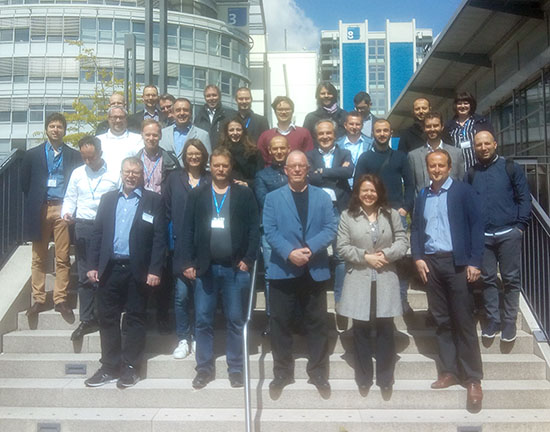In order to improve cyber attacks detection, we have started SIMARGL (Secure Intelligent Methods for Advanced Recognition of Malware and Stegomalware, Grant Agreement No 833042), a three-year project, on the 1st of May 2019. SIMARGL kick-off meeting was held on 13th – 14th of May at the FernUniversität in Hagen, Germany.
SIMARGL is a project co-funded by the European Commission under Horizon 2020 programme, to combat the pressing problem of malware. It aims to tackle the new challenges in the cybersecurity field, including information hiding methods, network anomalies, stegomalware, ransomware and mobile malware. SIMARGL will offer an integrated and validated toolkit improving European cyber security.
The cutting-edge of the proposed solution stems from the development of a more general approach, one that has the ability to counteract the new, complex malware. SIMARGL will use breakthrough methods and algorithms to analyze the data from networks, such as: concept drift detectors, advanced signal processing and transformations, lifelong learning intelligent systems (LLIS) approach, hybrid classifiers, and deep learning, just to mention some techniques.
In the SIMARGL project 14 partners from 7 European countries unite their expertise and know-how: FernUniversität in Hagen (the coordinator) and netzfactor GmbH from Germany, Airbus Cybersecurity SAS and Thales SIX GTS France from France, Consiglio Nazionale delle Ricerche, NUMERA S.p.a. and Pluribus-One from Italy, Institute of International Relations from the Czech Republic, ITTI Sp. z o.o., Warsaw University of Technology and CERT Orange Polska from Poland, SIVECO Romania SA and RoEduNet (ARNIEC Agency) from Romania, Stichting CUIng Foundation from the Netherlands.
The partners shared their insights into the challenges and issues related to their respective work packages. Efforts have been made to make the requirements as specific as possible. The direction of the SIMARGL initiative was reiterated. The action points for the nearest future were established, setting up new communication channels and coming up with the date for the next meeting was agreed upon.
